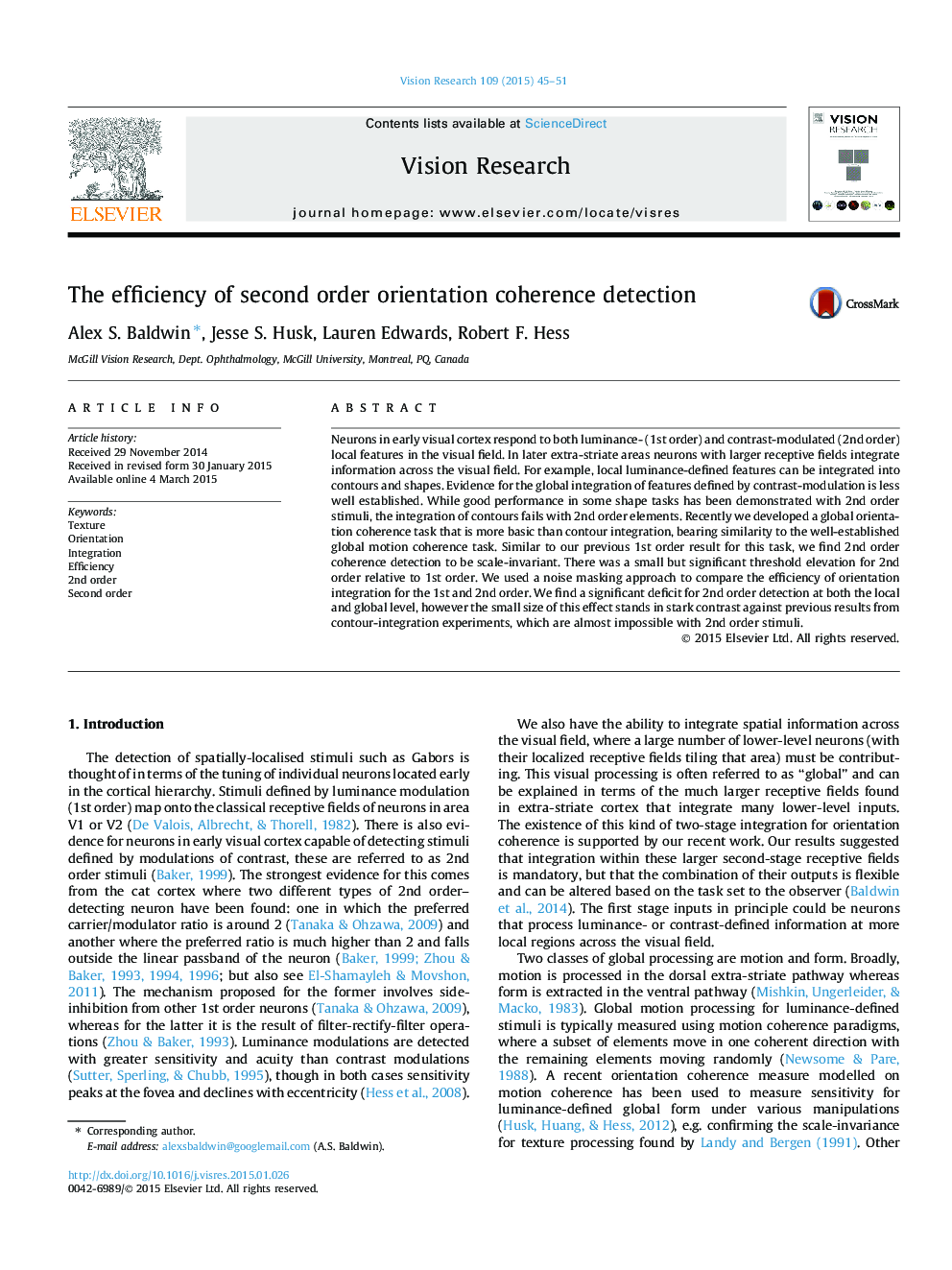| Article ID | Journal | Published Year | Pages | File Type |
|---|---|---|---|---|
| 6203243 | Vision Research | 2015 | 7 Pages |
â¢2nd order tasks involving shapes and contours show deficits relative to 1st order.â¢We compared orientation coherence thresholds obtained for 1st and 2nd order stimuli.â¢Coherence thresholds are scale invariant when contrast is normalised for visibility.â¢We find almost ideal efficiency for 1st order, and approaching that for 2nd order.â¢This similarity for 1st and 2nd order is surprising considering previous results.
Neurons in early visual cortex respond to both luminance- (1st order) and contrast-modulated (2nd order) local features in the visual field. In later extra-striate areas neurons with larger receptive fields integrate information across the visual field. For example, local luminance-defined features can be integrated into contours and shapes. Evidence for the global integration of features defined by contrast-modulation is less well established. While good performance in some shape tasks has been demonstrated with 2nd order stimuli, the integration of contours fails with 2nd order elements. Recently we developed a global orientation coherence task that is more basic than contour integration, bearing similarity to the well-established global motion coherence task. Similar to our previous 1st order result for this task, we find 2nd order coherence detection to be scale-invariant. There was a small but significant threshold elevation for 2nd order relative to 1st order. We used a noise masking approach to compare the efficiency of orientation integration for the 1st and 2nd order. We find a significant deficit for 2nd order detection at both the local and global level, however the small size of this effect stands in stark contrast against previous results from contour-integration experiments, which are almost impossible with 2nd order stimuli.
